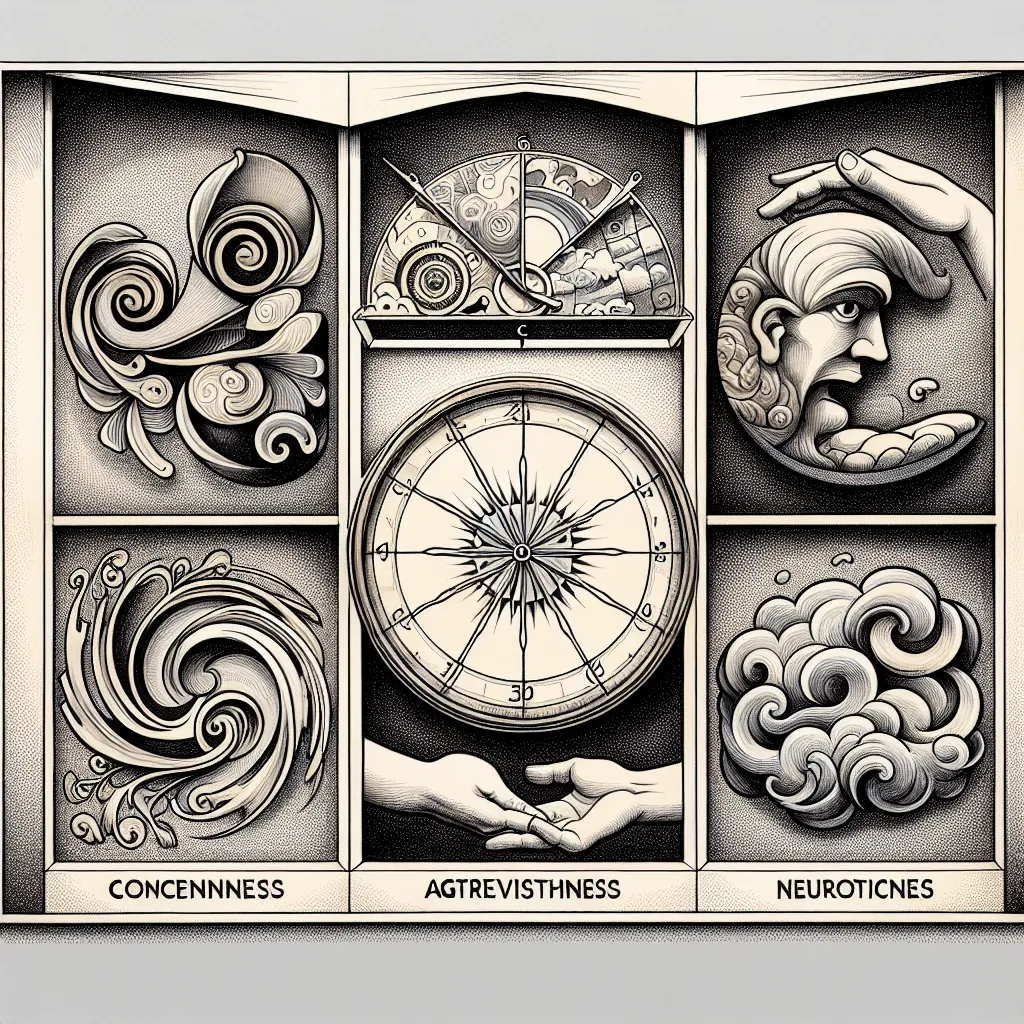Exploring the Big Five Personality Dimensions
The Big Five personality dimensions, also known as the OCEAN model, is a widely researched and globally acknowledged framework for understanding human personality. Comprising five broad dimensions, it serves as a critical tool for psychologists, researchers, and individuals alike, aiming to comprehend and gauge the complexities of personality traits. These dimensions are Openness, Conscientiousness, Extraversion, Agreeableness, and Neuroticism, each representing a spectrum along which individuals exhibit varying levels of characteristic behaviors and tendencies.
Openness to Experience: The Artists and Adventurers of Personality Traits
The Openness dimension reflects the degree of intellectual curiosity, creativity, and preference for novelty and variety a person displays. Those high on Openness are typically imaginative, open to new experiences, and have diverse interests. They often display a penchant for artistic and cultural pursuits and are considered to be more aware of their feelings. People high in this trait also tend to be more willing to examine abstract concepts and entertain novel ideas.
In contrast, those low on Openness are often conventional, prefer routine and familiarity, and may be resistant to change. They can be regarded as pragmatic and grounded, with a solid adherence to traditional and practical approaches in their everyday life. Industries and roles that cherish innovation, such as creative arts, research, and development, tend to attract people with higher levels of Openness.
Conscientiousness: The Organizers and Planners within Us
This dimension is indicative of a person’s level of self-discipline, organization, and the ability to control impulses. Individuals with high Conscientiousness are dependable, make plans and follow through with them, and take their obligations seriously. They are often meticulous and methodical, setting goals and persistently working towards achieving them. Such traits enable them to excel in structured environments where consistency and reliability are valued.
On the opposite end, individuals scoring low on Conscientiousness might struggle with punctuality and organization. They may exhibit a more laid-back, spontaneous lifestyle, and tend to dislike structure and schedules. Although this can sometimes be associated with a lack of direction, it can also suggest flexibility and adaptability in the face of unexpected changes.
Extraversion: The Social Butterflies and Solitary Wolves
Extraversion or Extroversion is characterized by an orientation of one’s interests and energies toward the external world and the people in it, as opposed to the internal, subjective world. Extroverts are typically sociable, assertive, talkative, and lively. They draw energy from being around others and are often perceived as being full of life and enthusiasm.
In contrast, introverts, or those low on Extraversion, require private time and solitude to recharge and may feel drained after social interactions. They often prefer to work alone or in quiet settings, and while they may form deep connections, they tend to have a smaller circle of friends. Both ends of the spectrum offer distinct advantages and challenges in personal and professional contexts, with various roles and environments better suited to different levels of Extraversion.
Agreeableness: From Compassionate Cooperators to Challenging Competitors
This dimension captures the quality of interpersonal relationships and the extent to which a person is cooperative versus antagonistic. Highly agreeable individuals are typically trustworthy, helpful, and compassionate—they value social harmony and are often considered to be good-natured and likable. In group settings, they tend to be conciliatory and act as mediators during conflicts.
On the flip side, those with lower levels of Agreeableness may be more competitive or challenging. They may not shy away from expressing their opinions, even if it leads to discord, and can be perceived as more straightforward or blunt. In competitive environments and negotiations, less agreeable individuals may find themselves at an advantage as they are better able to advocate for their own interests without the need for consensus.
Neuroticism: Emotional Stability versus Sensitivity
The final dimension of the Big Five is Neuroticism, which measures emotional stability and the degree to which a person experiences negative emotions like anxiety, sadness, and irritability. Individuals with high Neuroticism may be more susceptible to mood swings and stress. They can be more sensitive to environmental stressors, and often perceive ordinary situations as threatening or hopelessly difficult.
Conversely, those low on Neuroticism are usually calm, emotionally stable, and less reactive to stress. They tend to be more resilient in the face of life’s challenges and are typically seen as having a good level of emotional control. While each level of Neuroticism has its strengths and drawbacks, understanding one’s own emotional responses can be immensely beneficial for personal development and managing relationships.
The Big Five Across Cultures and Throughout Life
While the Big Five personality dimensions provide a robust framework for understanding human behavior, it is important to acknowledge cultural differences in the expression of these traits. Moreover, the dimensions are not fixed and can change across one’s lifespan due to personal experiences, social influences, and other factors.
Importance in Professional Settings
The Big Five model is particularly valuable for organizational development, recruitment, and career counseling. Employers often use personality assessments based on the Big Five to identify the most suitable candidates for specific roles. For instance, high levels of Conscientiousness may be sought after for positions requiring attention to detail, while roles in customer service may benefit from candidates with high Agreeableness and Extraversion.
Application in Personal Growth
On an individual level, an understanding of the Big Five can aid personal growth by highlighting areas for development. By recognizing their own personality dimensions, people can work on managing their less constructive traits and leveraging their strengths more effectively.
Conclusion
The Big Five personality dimensions are a valuable tool for exploring the multifaceted nature of human personality. By assessing an individual’s level of Openness, Conscientiousness, Extraversion, Agreeableness, and Neuroticism, we gain insights into their behavior, motivations, and potential compatibility with various life environments. Understanding the Big Five can facilitate personal growth, improve interpersonal relationships, and optimize team dynamics in professional settings. As a framework for exploring the rich tapestry of human temperament, the Big Five model continues to be an essential component in the ever-evolving field of personality psychology.



Leave a Comment